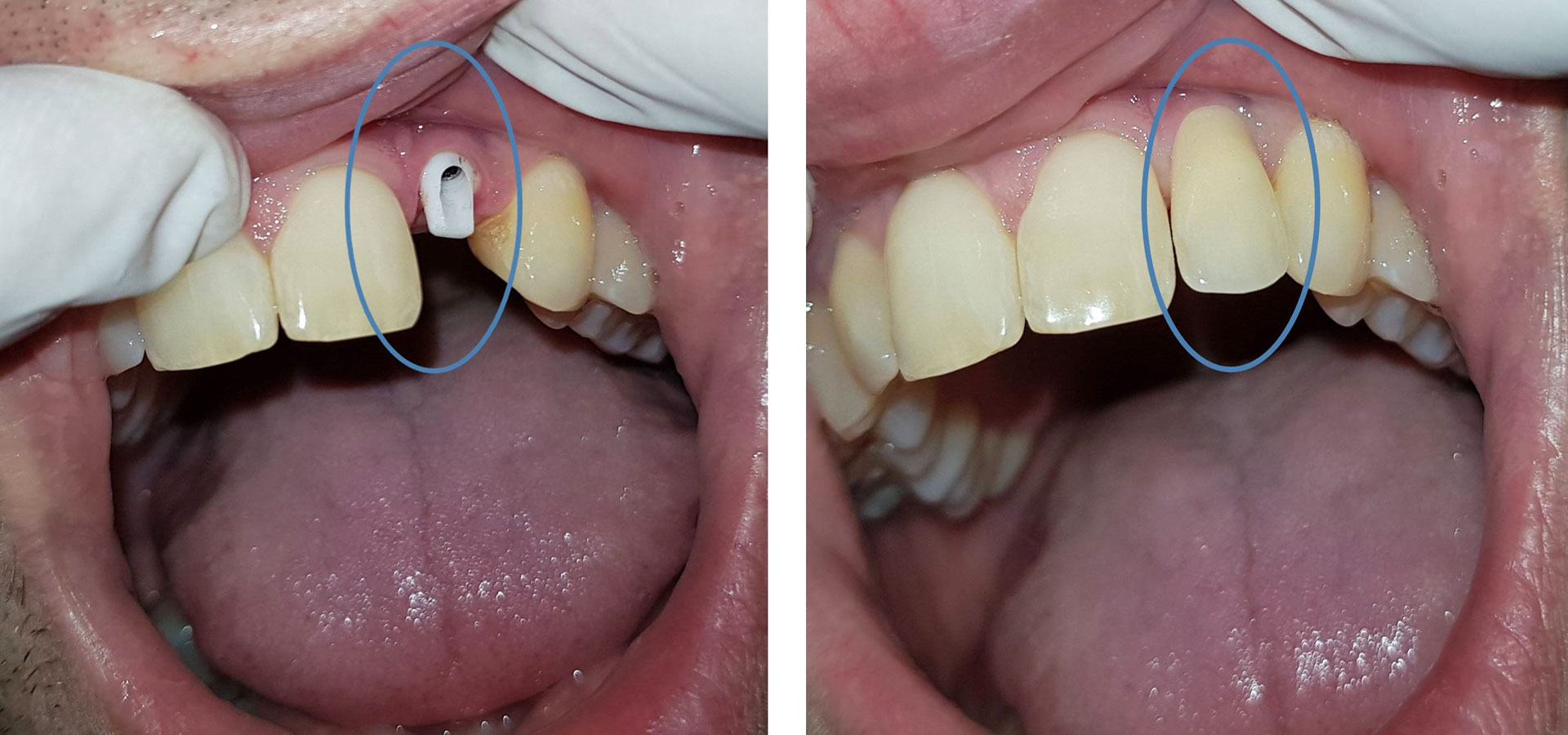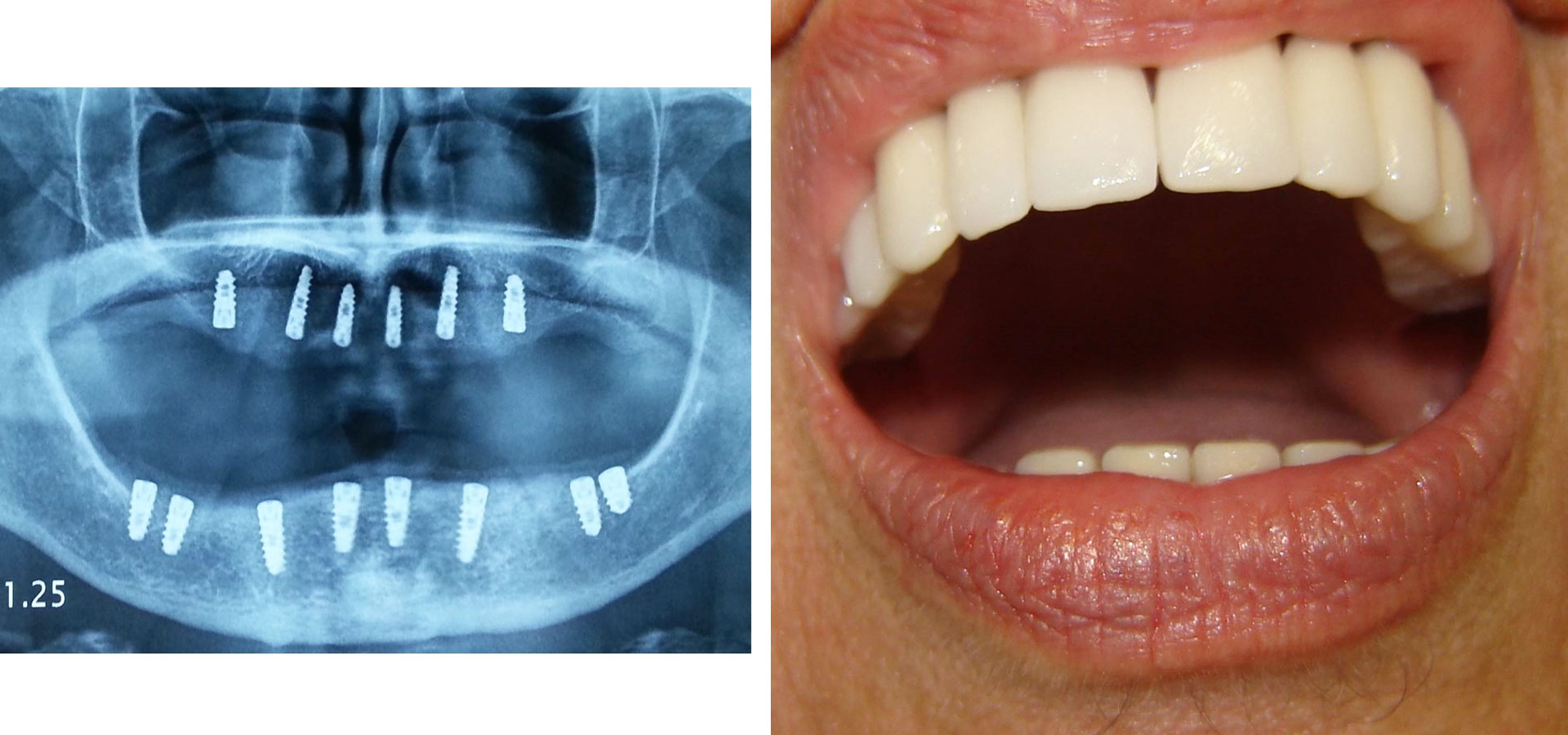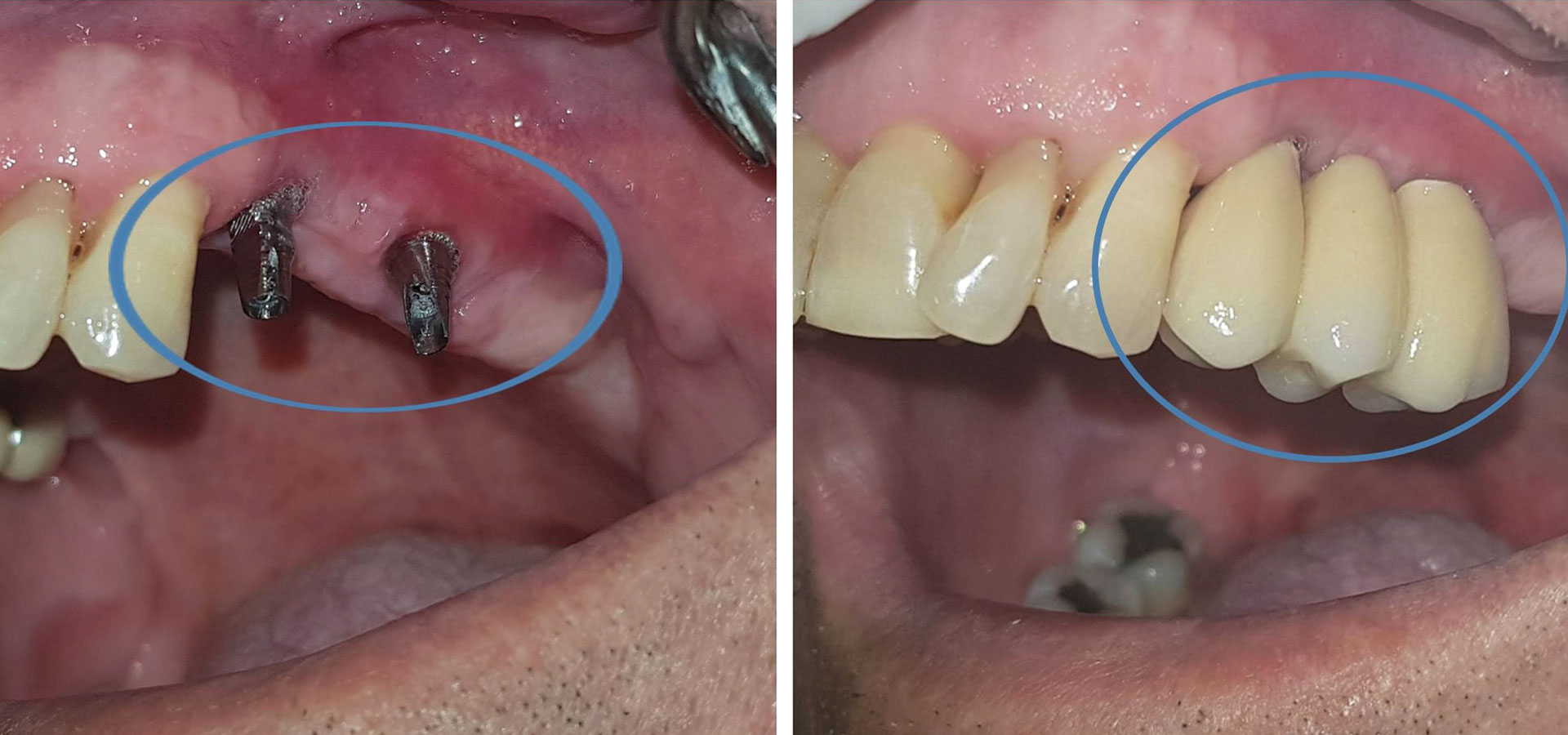They are the most significant achievement of Dental Science in the field of tooth replacement that are in need of replacement for various reasons. Depending on the case, tooth crowns are placed on these artificial roots functioning as either individual crowns or as abutments for bridges or for dentures.
Numerous reasons laid the foundation for the development of implants and their application in daily clinical practice. First of all, they provided the possibility of replacing lost teeth without damaging adjacent teeth, as in the case of a typical tooth retained bridge. In addition, the dentition is strengthened because in the implant restoration the artificial titanium root mechanically supports the pressures and loads that the prosthesis sustains and at the same time maintains the volume of the alveolar bone, contributing to the aesthetics of the face. Another reason which highlights the usefulness of implants is that in cases of complete edentulousness, it is possible to proceed to dental restoration with fixed prostheses, if the conditions for the implant placement are met. While in cases which allow the option to choose between different dentures supported by an implant-supported prosthesis, the actual support offered by the implants is much more stable in comparison to standard dentures.
Regarding the choice and decision of placing dental implants in a patient, a detailed investigation of the medical history, clinical and radiological examination is required. Also, an appropriate discussion should take place, during which the patient’s requirements have been understood while he has accepted the course of treatment with implants.
During surgical placement in the jaws, suitable ‘holes’ are made in the bone, into which the implants are screwed in. It is possible that, if the necessary criteria are met, the teeth will be removed as planned, and the implants will be placed at the same time. During this procedure it is important to state that no pain is felt by the patient as a sufficient depth of anesthesia has been achieved in the local area of the operation. The time it takes to place a dental implant is estimated to be between an average of 5 - 10 minutes in the hands of an experienced surgeon. Postoperatively, the patient should follow the instructions given in order to avoid complications and to heal the wound in the fastest and safest way.
It takes about 3 months for the titanium, the construction material of the implants, to integrate with the jaw bone. At the end of this integration period, during the second stage, the artificial roots of the implants are used to obtain correct intraoral impressions, a procedure similar to that used in conventional prosthetic restorations. There are some extra stages of testing the prosthesis in order to evaluate them aesthetically and functionally and to ensure that the patient is pleased with them and thus the process is completed.


